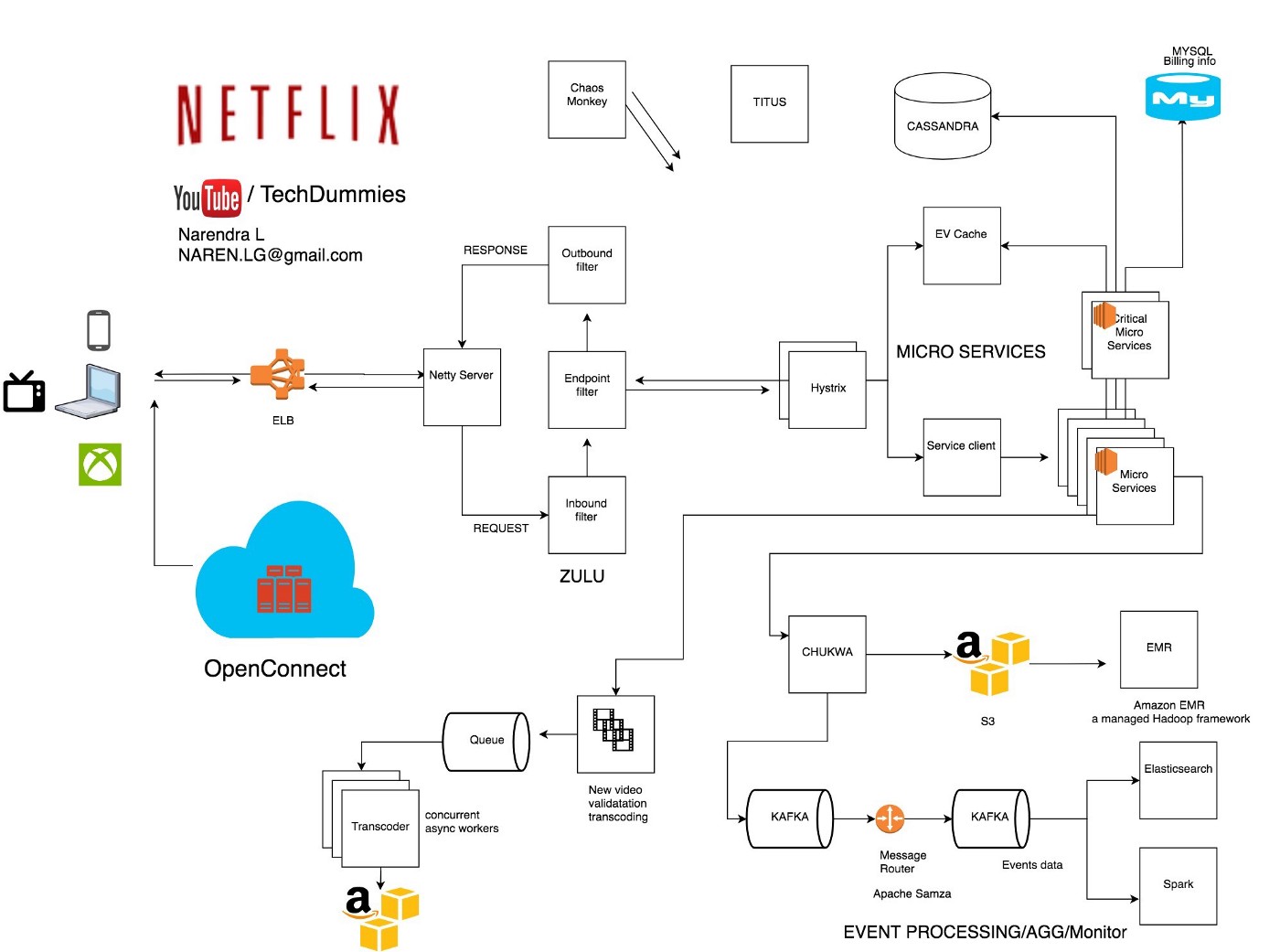System Design
14 Apr 2020Design Netflix

From https://medium.com/@narengowda/netflix-system-design-dbec30fede8d.
Notes
Video transcoding. For example, H.265 –> MP4. May change resolution and frame rate to better user experience on a particular device.
Netflix also creates difference video files depending on the network speeds you have. On average, 1200 files are created for one video.
Once a video is transcoded, the thousands of copies of it get pushed to the many streaming servers that Netflix has, via its Content Dellivery Network (CDN).
When a user clicks the play button on a video, a nearby streaming server is matched, for the video copy with the best resolution and framerate for the user’s device.
Content recommendation. Netflix uses data mining (Hadoop) and machine learning to recommend videos the user might enjoy watching based on their browse / view history.
Client side. Netflix supports 2200 different devices: Android, iOS, gaming consoles, web apps, etc, involving various client side technology. On the website, they use React JS a lot, for its startup speed, runtime performance and modularity.
Front end load balancing. User requests are routed to Netflix’s frontends via AWS’s Elastic Load Balancer, which is the two tier load balancer. At the first tier, it uses DNS based round robin to select an ELB endpoint in a particular “zone”. At the second tier, it does another round robin to select a server within that zone.
EV Cache. A distributed key value store based on Memcached. Reads are served by the nearest server, or a backup server if the nearest is down. Writes are duplicated to all servers. SSDs are used for persistent yet performance storage.
Database. Static data like user profiles and billing information are stored in MySql databases. Netflix runs its own MySql deployment on EC2 VMs. Handles database replication and etc. Replicate fail-over is done via updating a DNS entry for the DB host.
Cassandra. A distributed wide column NoSQL data store. Designed for consistent read/write performance at scale. Netflix stores user viewing history in Cassandra. Latest view history that undergos frequent reads and writes are stored uncompressed while older history is compressed, to save storage.
Monitoring and event processing. The Netflix’s clients generate a lot of events every second of every day: ~500 billion events per day (~1.3 PB data) and ~8 million events and ~24GB data to be processed per second during peak hours. Events include video viewing activities, UI activities, error logs, and etc.
They use Apache Chukwa to collect and monitor these events. Chukwa is based on HDFS and Map Reduce. The collected events are routed by Kafka to various data sinks: S3, Elastic Search, and possibly a secondary Kafka.
Netflix uses Elastic Search to help with mapping a user end failure (failure to watch a video) to error logs. Elastic Search is a document search engine. AWS has a managed version of it.
Autoscaling. When people get home from work, load increases and the system automatically scales up.
Media processing. Switching gears a bit, over to the content production side. Before a video is put on the Netflix site, it undergos a lot of processing steps. For instance, large videos are split and encoded in chunks, in parallel.
Spark. Content recommendation and personalization is done via managed Spark clusters.